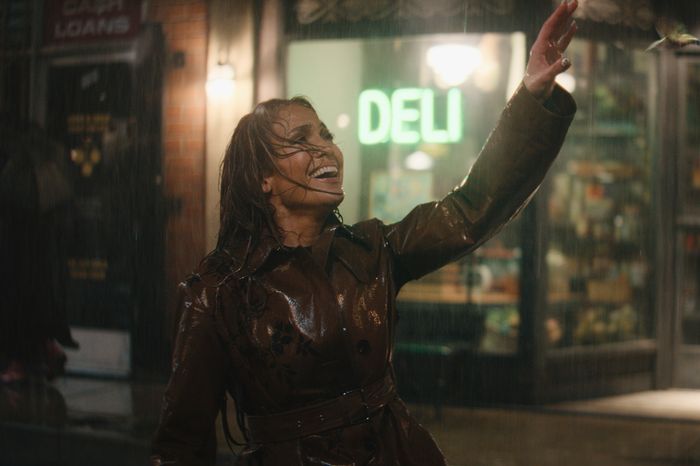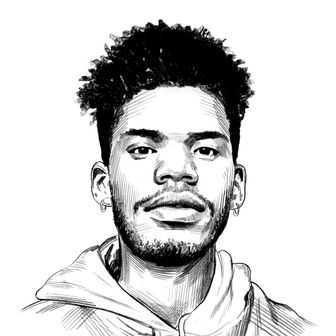
J.Lo and the gang just dropped a new poster for the album-accompanying “intimate,” “musical,” “cinematic” “experience,” This Is Me … Now: A Love Story, and it’s just as confusing as the trailer. The poster is packed with symbolism, from the dual astrological dials flanking both sides — prominently featuring her cuspy Leo — to falling roses easily mistaken for blood(!!) fluttering across its visage. Lopez herself, looking a bit like a cross between Katniss Everdeen and Juliette Nichols from Silo, stands at its center, disheveled yet triumphant in the dirt and grime of the love games she’s been playing for the last 30 years of her public life. Coupling that with the trailer, which featured inexplicable imagery, including a flashy quick-cut of her many weddings, a motorcycle accident on what looks like a half-frozen tundra, and the mention of a possible sex addiction, there’s just a lot going on here. I spent a few hours theorizing on what exactly this movie is tryna be before it hits Amazon on February 16.
An ode to Audre Lorde
Aight, so, given the mainstream appropriation (and some would say dilution!) of the self-care principle, I’m sure we’ve all read Zami: A New Spelling of My Name, right? The subheading on that book is A Biomythography by Audre Lorde. And while there are many resonant themes within that work, the most relevant for our purposes relies on Lorde’s return to self, amid post-Depression-era Harlem. There’s a couple ways to think about the Lopez-Lorde connection: They both insist on changing their names — Lorde for more self-exploratory purposes and Lopez because she got married, like, a lot; both see New York as a space of both discovery and dilapidation (more on that later); and both have found love numerous times over, defining their lives and careers in very specific ways (the former centering on forms of resistance to the West and the latter in the emotional oscillations of celebrity). But if the poster and trailer are to be believed, J.Lo might’ve missed the plot a little bit on the whole “biomythography” thing. Where Lorde wanted to reflect the intimacy, generosity, and liberation that comes from the women who contributed to her sense of self, it seems Lopez is basing this story on her four marriages to menfolk — Ojani Noa, Cris Judd, Marc Anthony, and Ben Affleck — who, in very coy casting, all fall into archetypes: the Quiet One (played by Alix Angelis), the Realist (Malcolm Kelner), the Lover (Brandon Delsid), and Ben Affleck likely playing Ben Affleck. Feels like the pop star is still figuring her way through the male gaze (with a healthy dose of her own product placement for good measure).
A tale about labor movements coinciding with the loss of yearning
One prominent image both on the poster and in the film’s trailer is a mechanical heart that seems to be going awry. With quick cuts to factory workers in goggles and hazmat suits dancing atop and along assembly lines, we’re made to believe that these workers braving the dangerous fumes of desperate love are doing their damndest to keep the heart beating smoothly for as long as possible. But the references to labor don’t stop there. We see Fat Joe leaning back in his therapist chair, perhaps growing a li’l exasperated, literally clocking out of her latest pity-partying session (and Lopez eye-rolling its untimely end). The workers are done with kowtowing to the whims of the wealthy elite; they’re putting in their time sheets and two-stepping out of the workplace. And if that weren’t enough, during one of the presumed couples-therapy appointments, one of her aggrieved beaus is sick of dealing with her “constant criticism,” claiming that Lopez “thinks I’m her employee.” That part of the biomythography — when Girl Bossing bleeds into one’s actual relationship — definitely feels real. Leave it to Lopez to Les Mis the fuck outta her own life. This here is a work of art that speaks directly to our moment!
A story about J.Lo’s role in New York’s ongoing gentrification
Lopez is really feeling a way about Eric Adams’s noirish New York. The city is grimy and dystopian, and Lopez looks slightly unsettled as trash and debris flits across cracked pavement. This is not the block she once knew! Ain’t no way she’s touting the rocks that she got in this bleak Babel! Peep the shot in the trailer where she’s on the Castle Hill train platform, the clouds overcast and what looks to be rainwater spraying off the top of the cars. Lopez walks, lonely, dragging her feet across rat-pelted concrete while she contemplates the criticism of her hopeless romanticism making her weak. Perhaps this is her vision of the city from a penthouse suite in Tribeca (or perhaps from the Afflecks’ Georgia plantation across state lines), and maybe this film is her reckoning with the flavorless gentrification she romanticized in her earlier work. Later in her narration, she even says to a lover, “Being with you feels like home, but I left home for a reason.” She doesn’t recognize her city, and, to be real, it doesn’t recognize her either.
Her Hunger Games, her Dune, her The Cell (again), her Dr. Strange (the 2016 original), her Color Purple (the musical, 1997 version), and also, somehow, her Anaconda
In the film’s trailer, Lopez posits herself as the villain. She’s someone who’s dealing with their own self-absorption through their intimate partners and accused of having an addiction to sexual gratification, while all her friends grimace-smile through her umpteenth wedding. There’s a ton of mixed signals in the poster, though. The hummingbird — which Vulture senior news editor Morgan Baila appropriately called “unnerving” — is a symbol of love, beauty, and grace, while Lopez looks more like a weathered phoenix tired of all the revivals. It also gives a bit of her look from Anaconda, as Vulture senior music editor Alex Suskind pointed out. The Dune allusions are based on the sheer amount of dust and sweat resting atop her skin. But perhaps the most interesting read from the Vulture team comes from Vulture TV critic Roxana Hadadi, who says that it’s Lopez’s version of her own 2000 film The Cell, wherein Lopez stars as “a child psychologist who uses virtual reality to venture into a serial killer’s mind.” The “nightmarish visuals and inaccessible dream logic from director Tarsem Singh” are mirrored in Lopez’s own maximalist interpretation of her life.
“There’s a persistent too-muchness to the film,” Roxana tells me, “that I immediately thought of when I saw the jumbled collage of the This Is Me … Now poster. Those blood-red roses, the steampunk-lite gears and mechanics, and Lopez floating outside of space and time at their center. The Cell’s late production designer Eiko Ishioka, who also worked on Francis Ford Coppola’s iconic version of Bram Stoker’s Dracula, would be honored by the mimicry. It is probably deranged to do a double-header of The Cell and This Is Me … Now, but it feels right?”
A recounting of one wild ’shroom trip
This, to me, feels like the most realistic origin story for this film. J.Lo might have hit the psilocybin one time too many during one of those fancy, shamanic psychedelic retreats rich people do in the Amazon and had a conversation with a deity about how everything is connected, how we’re both very big and very small, and that deconstructing one’s own life is the only way to exit the Matrix or whatever. This movie looks like it could be one long run-on sentence in her post-’shroom journal. The trailer leaps from the jealousy she felt looking over to her sister in their childhood bedroom while she “lied awake thinking, how does anybody sleep that way?” to a conversation with Neil DeGrasse Tyson (who somehow stays employed despite allegations of misconduct) on her place in the universe. The trip would also explain the casting situation. How did Trevor Noah get here? Is Jenifer Lewis gonna play the fairy godmother that helps J.Lo become more aware of her antics? Is Post Malone gonna get her on the straight and narrow when it comes to addiction? And it bears repeating, why is Trevor Noah here? This is the most expensive journey to self of all time, and apparently we’re just along for the ride.


